Readers share pictures of woodpeckers that show the beauty of these amazing birds. Look for these 10 types of woodpeckers across America.
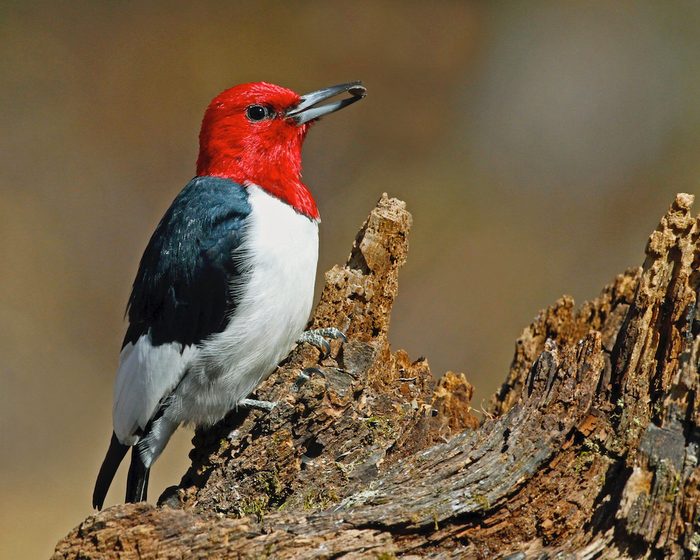
Types of Woodpeckers: Red-Headed Woodpecker
Talk about a stunning species. This bold type of woodpecker has a large, scarlet-colored head and spiky bill—and it’s skilled at catching insects midair. Both sexes sport a white belly, black back and white wing patches. Smaller than a crow, this Midwest and East Coast bird has a round, crestless head.
“A pair of red-headed woodpeckers lived the woods behind my house in Tennessee after a nearby timber harvest. I set up a bird feeding station in the woods during late winter hoping to attract the types of woodpeckers below the forest canopy. After several weeks of patiently watching from a distance, these elusive woodpeckers finally came within camera range,” says Burline Pullin. Check out the 4 best foods for attracting woodpeckers.
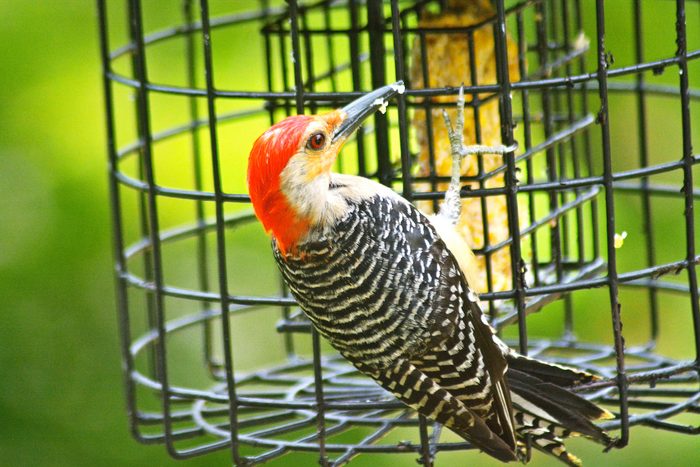
Red-Bellied Woodpecker
The name of this beautiful bird is misleading. Its belly is actually pale with tinges of red in the right light, and it has a black-and-white striped back with a bright red nape. Males also have a red crown. In the eastern United States where it lives, you’ll spot this bird picking at bark rather than drilling into it.
“The magnificent red-bellied woodpecker is a familiar year-round visitor to the suet feeders in my backyard. The patterns and colors of this species are striking. Amazingly, they are not bothered by humans, so I can spend hours taking pictures of the woodpeckers as they munch on their favorite food,” says Mary Flores Comacho.
Psst—these are the best suet feeders for winter birds.
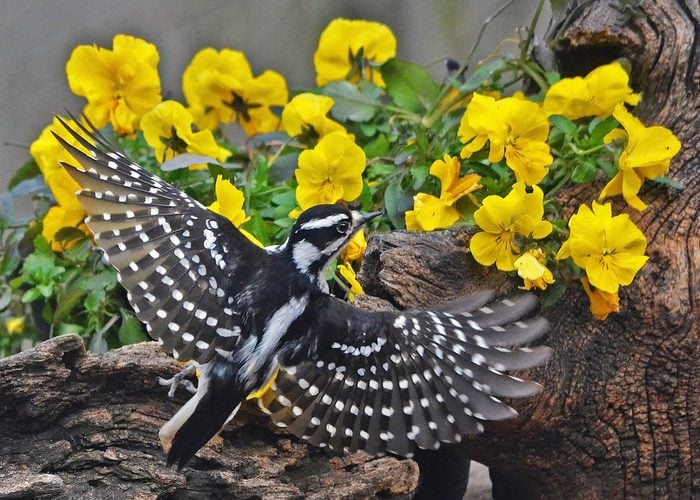
Downy Woodpecker
The downy woodpecker is the smallest and most common type of woodpecker, living year-round in most of the U.S. except the extreme Southwest. Slightly smaller than a robin, this cute bird has a pale belly, checkered black-and-white head and back, and a surprisingly short bill for a woodpecker. Males show a flash of red at the back of their heads.
“This bird is a female downy woodpecker. I was in our side yard taking pictures of our flowers when I spotted the downy sitting on an old log looking for bugs,” says Ella Clem of Frankfort, Kentucky.
Check out 14 mind-blowing woodpecker facts you should know.
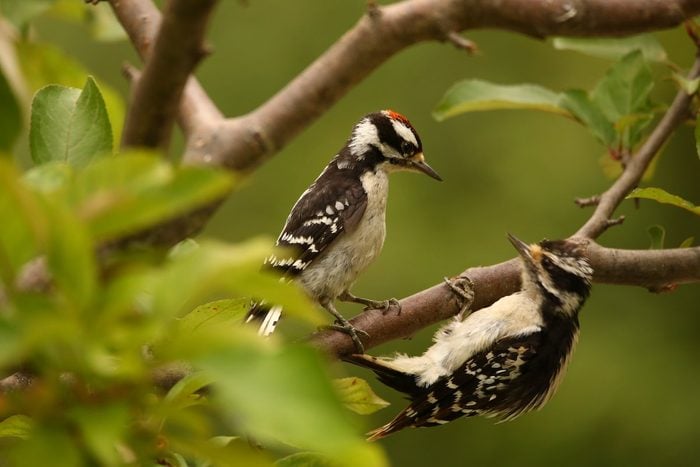
Hairy Woodpecker
While its markings are similar to the downy’s, the hairy woodpecker is about one-third larger, close to the size of a robin. Its chisel-shaped bill is prominent, about the same length as its head. Its coloring varies across North America, and at times it appears to be stained with brown watercolors and has less spotting.
“I was trying to get some pictures of this young hairy woodpecker when the adult male suddenly showed up. I was happy to capture them before they flew away,” says Mike Lasky.
Learn how to tell the difference between downy and hairy woodpeckers.
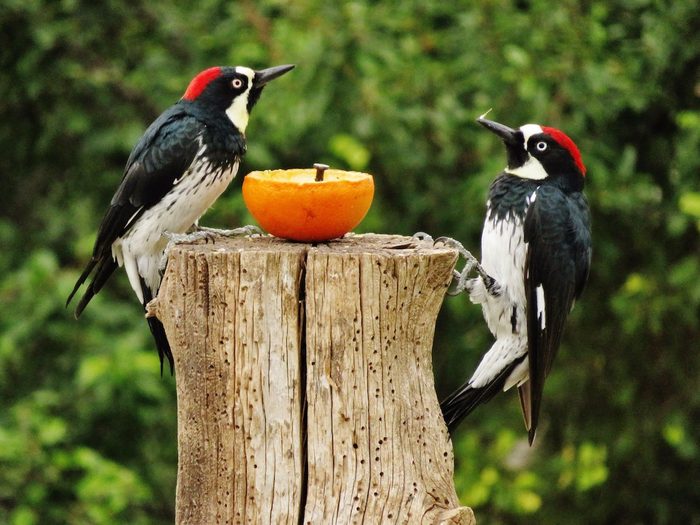
Acorn Woodpecker
These quirky woodpeckers love to stockpile nuts, including acorns, in small holes in tree trunks. “This year I’ve been putting oranges out for the songbirds in the backyard, and I was surprised to see acorn woodpeckers also enjoying them. We’ve had a whole family of these woodpeckers visiting the yard almost every day even though we don’t have any oak trees nearby. It’s a joy to be watch these funny and beautiful birds,” says Kitty Warner.
Find out why woodpeckers peck and how to stop it.
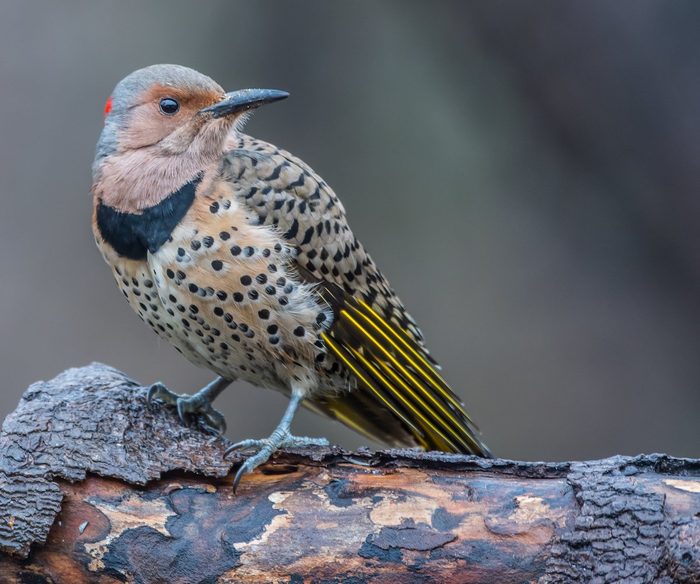
Northern Flicker
With markings unlike those of any others on this list, northern flickers have a black bib, spotted belly, white rump and a brownish gray back patterned with spots, bars and crescents. Males also may show red or black whiskers, a red nape crescent and stripes of yellow or red throughout their tail feathers. Larger than a blue jay and found across North America, this bird often forages on the ground.
“The first time I saw a northern flicker at my house I thought someone’s exotic pet got loose. I was awestruck with its markings and color. This woodpecker picture was taken in January as the flicker came to feast on some suet. I loved this pose because it shows off all the bird’s glory. They are my favorite bird. I think they look like they have been painted to perfection!” says Kathy Stewart.
Psst—woodpeckers love to eat peanut butter. Here’s how to make a pine cone bird feeder.
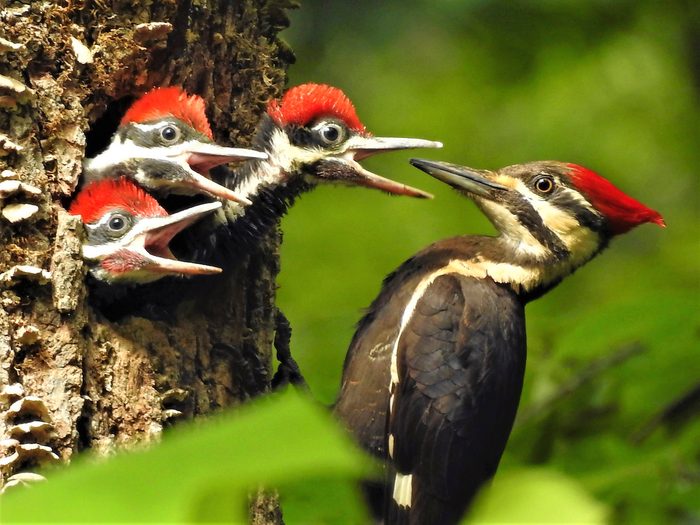
Pileated Woodpecker
The pileated woodpecker is a behemoth and striking to behold. As soon as you spot one, you’ll know. With a flaming red triangular crest, large size (nearly 20 inches!) and a wingspan close to 30 inches, this is the largest type of woodpecker in North America. Pileateds specialize in foraging for carpenter ants, drilling distinctive square holes into trees. They’re found in Canada, the eastern U.S. and along the West Coast.
“A couple saw me walking with my binoculars and camera in hand in the north Georgia mountains,” says Amy Boggan. “They asked if I’d walked past the pileated woodpecker nest. They pointed out the exact tree to watch. About 20 minutes later, I took this incredible picture of woodpeckers.”
Are pileated woodpeckers common at feeders?

American Three-Toed Woodpecker
Two good spots to look for this type of woodpecker are Great Basin National Park and Grand Teton National Park. These birds are mostly black with some white spots; males have a yellow forehead patch.
“I photographed this American three-toed woodpecker on June 23 near Scott’s Pass, south of Sisters, Oregon. The bird had a nesting cavity in an area that was burned by a forest fire several years ago,” says Harry Johnson.
Learn how woodpeckers use their tongues.
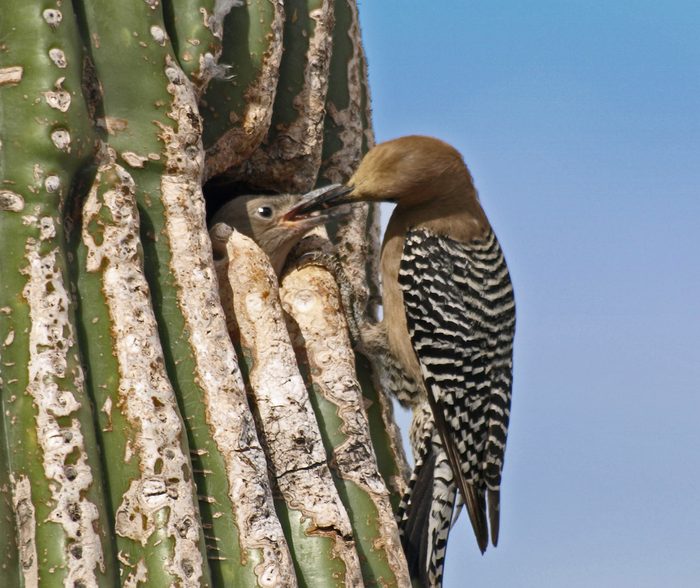
Gila Woodpecker
This noisy desert bird draws attention as it excavates tree trunks and saguaro cactuses for nesting cavities. Close to 10 inches long, gilas are found in southern Arizona. They’re sometimes spotted at hummingbird feeders, but gilas primarily forage for fruit and insects, gleaning them from cactuses, trees and other plants.
“This picture demonstrates the desert dwelling bird feeding young from the safety of a Saguaro nest,” says Stanley Andrews.
Discover more desert birds of the Southwest.
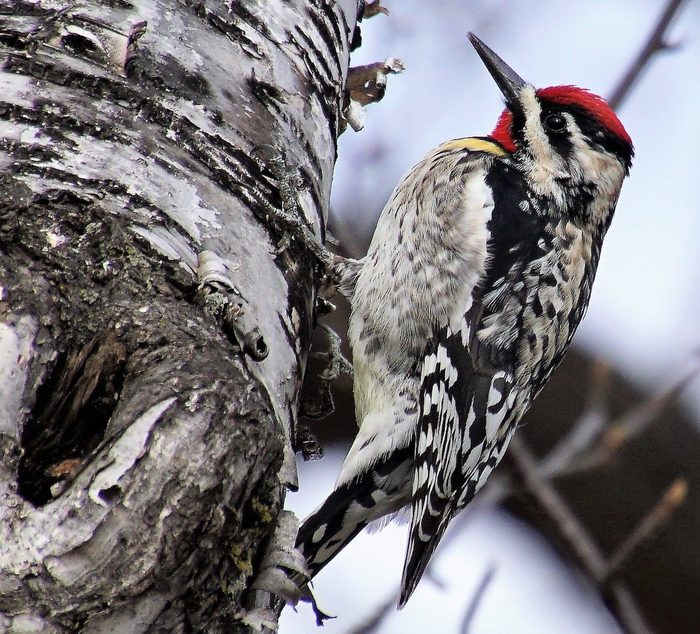
Yellow Bellied Sapsucker
It’s hard to see when they’re foraging, but these sapsuckers do have hints of pale yellow on their stomachs. The size of a grosbeak, this bird is white and black with a red-peaked forehead and a short, sturdy beak; males also sport a red throat. Drilling holes in bark, they suck up the tree’s sugary sap, hoping to snatch up insects. They are found throughout the eastern half of North America.
“In May, my husband I saw this yellow-bellied sapsucker in a park near our home. We really enjoy the variety of types of woodpeckers in west central Minnesota and always like seeing this sporadic visitor to the neighborhood,” says Lori Dyer.
Next, meet the 3 types of goldfinches in the United States.
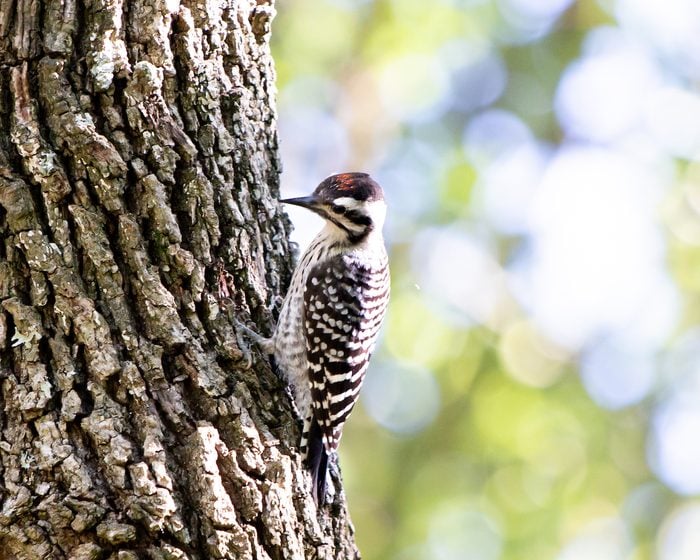
Ladder Backed Woodpecker
These small, striped woodpeckers share the same desert habitats as the pyrrhuloxia in the Southwest and Mexico. One hotspot where you can see ladder backed woodpeckers is Saguara National Park in Arizona. Females do not have red on their head.
“This handsome, spirited male ladder-backed woodpecker has frequented our backyard all summer, along with a few of his family members. I’ve enjoyed watching and photographing the family,” says Lisa Welch.
source: birdsandblooms.com








